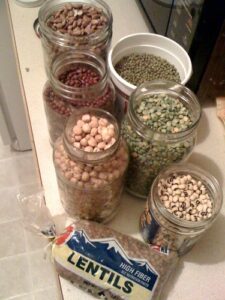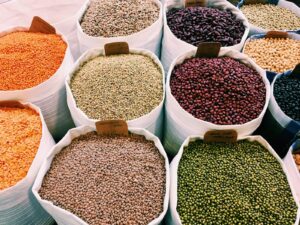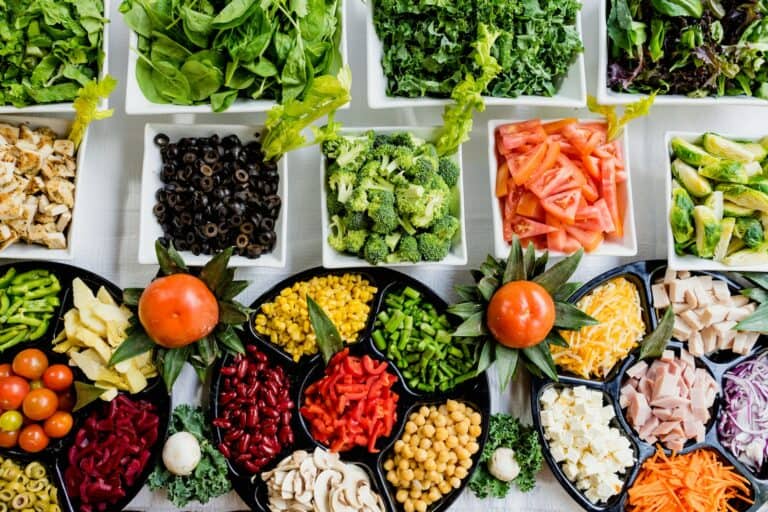When it comes to the variety of bean types available, it’s easy to feel spoiled for choice. From the well-known black beans and kidney beans to the lesser-known cranberry beans and gigante beans, the world of beans offers a diverse range of flavors, textures, and health benefits. Beans are an excellent source of protein and fiber, making them a staple in many diets across the globe. In this article, I’ll be discussing various bean types, including their characteristics and culinary uses.
Pinto beans, fava beans, lima beans, mung beans, navy beans, garbanzo beans, cannellini beans, and adzuki beans are just a few of the many types of beans available to us. Beans are a versatile ingredient that can be incorporated into a variety of dishes, such as bean salads, pasta dishes, and more. Some beans have a nutty flavor, like pasta dishes featuring cannellini beans. In contrast, others boast a sweet flavor, like adzuki beans which are often used in desserts. While not directly related, it’s interesting to note that even coffee beans and cocoa beans stem from the same plant family and offer distinctive flavors of their own.
Each bean type comes with its unique culinary characteristics. For instance, red beans, green beans, and garbanzo beans can be cooked into a creamy texture or kept firm for salads, while butter beans are called such due to their buttery taste. The beans themselves might have a mild flavor or a slightly sweet taste, such as black-eyed peas. The preparation methods for beans also vary. For example, the way of preparing fava beans involves removing the tough outer skin before cooking, whereas dried beans like red kidney beans and flageolet beans require a longer cook time to soften.

Exploring the World of Black Beans
When it comes to bean types, black beans have always been popular for their versatility, nutrition, and taste. They’re often compared to other types of beans like pinto beans, kidney beans, and navy beans, but they stand out with their unique characteristics. Black beans offer a slightly sweet flavor, making them an excellent addition to various dishes such as bean salads, pasta dishes, and even baked beans.
One key factor that sets black beans apart is their ability to maintain a relatively stable blood sugar level after consumption. This feature has made them a favorite among diabetics and those looking to keep their blood sugar levels in check. When compared to various beans, such as cranberry beans or red kidney beans, black beans fare significantly better in this regard.
In addition to their taste and health benefits, black beans hold a substantial amount of protein, iron, and fiber. These nutrients help us meet our daily nutritional needs, making black beans a valuable addition to any diet.
As a staple in many Latin American and Caribbean cuisines, black beans have been incorporated into a diverse range of dishes to achieve that most desired sweet-nutty flavor. They pair exceptionally well with various cooking ingredients, from olive oil to lime juice, giving foodies the creative space to bring out the best in their dishes.
Like most beans, black beans can be stored as dried beans or purchased as canned beans. For those wanting to take control over the cooking process and flavor, buying dried beans is the way to go. It’s essential to pre-soak and cook beans thoroughly, as this not only softens them but also helps get rid of any potential toxins that might be present in the beans.
To sum up, black beans stand out as a versatile and nutritious bean type that can be enjoyed in various dishes from around the world. Their slightly sweet flavor, health benefits, and compatibility with a wide range of ingredients make them a popular choice among various other bean types. Whether you’re whipping up a quick bean salad or cooking a hearty bean stew, black beans never disappoint.
The Versatile Kidney Bean

I’ve always been fascinated by the wide variety of bean types available. These legumes are not only versatile in their culinary uses but also offer numerous health benefits. In this section, I’ll focus on one of the staples of many diets around the world: the humble kidney bean.
Kidney beans hold their own when compared to other popular beans, such as pinto beans, garbanzo beans, and lima beans. They have a slightly sweet flavor, which makes them ideal for a range of dishes, from pasta dishes to bean salads. Their creamy texture makes them a favorite in Puerto Rican and Dominican dishes, as well as in Indian cuisine.
One main advantage of kidney beans is their ability to control blood sugar levels. They have a low glycemic index (GI) of around 29, which means they’re slowly absorbed into the bloodstream, avoiding sudden spikes in blood sugar. This makes them a great choice for those who need to manage their diabetes or maintain a healthy weight.
However, it’s not just about their impact on blood sugar. Kidney beans also offer a wealth of essential nutrients. Rich in protein, fiber, iron, and potassium, they have numerous health benefits and can even help reduce the risk of various diseases, such as heart disease and certain cancers.
When cooking kidney beans, it’s essential to soak and cook them properly, as they contain a natural toxin known as lectin, which can cause digestive issues if not removed. Soaking the dried beans for at least 5 hours and then boiling them in fresh water for at least 10 minutes helps to eliminate the toxin.
Kidney beans can easily be added to a variety of dishes to boost their nutritional content and satisfy your taste buds. Some of my favorites include:
– Chilli con carne with red kidney beans
– Three-bean salads using a mixture of kidney, navy beans, and cannellini beans
– Indian Rajma Curry featuring tender, cooked kidney beans
– Hearty bean soups that warm you up during cold winter months
In conclusion, among the vast array of bean types, kidney beans stand out as a versatile, nutritious, and delicious option for various cuisines. Whether you choose to use canned beans for convenience or prefer cooking the dried beans yourself, kidney beans are definitely worth incorporating into your meals. So the next time you’re planning a meal with beans, don’t hesitate to give kidney beans a try!
Final Thoughts: Diversify Your Bean Intake
By exploring a wide variety of bean types, it’s easy to see just how versatile these little legumes can be. From pinto beans to kidney beans, and from mung beans to garbanzo beans, each variety offers its own unique flavors, textures, and health benefits. With so many delicious bean types to choose from, diversifying your bean intake can add some excitement and variety to your meals.
I’ve discovered that the earthy flavors of pinto beans, black beans, and navy beans work well in traditional dishes like refried beans, baked beans, and bean salads. Meanwhile, the nutty flavor of adzuki beans, cannellini beans, and great northern beans can add depth to pasta dishes, soups, and stews. If you’re a fan of sweet and slightly creamy textures, consider incorporating fava beans, kidney beans, lima beans, or cranberry beans into your meals. And let’s not forget the mild and slightly sweet flavor of green beans, which can be eaten raw, sautéed with olive oil, or steamed.
While it’s common to use canned beans for convenience, I’ve found that cooking dried beans can elevate a dish’s flavor and texture. Popular dried bean varieties include red beans, white beans, black-eyed peas, and flageolet beans. When preparing dried beans, be patient and gentle to achieve that perfect creamy texture. However, some bean types, like gigante beans, require more preparation than others, so be sure to research the cooking recommendations for each variety.
Besides their culinary appeal, beans offer several health benefits, too. Most beans are high in fiber, which can lower blood sugar levels, reduce cholesterol, and promote a healthy digestive system. The protein found in beans like soybeans makes them a popular and more sustainable alternative to animal proteins, with products like soy milk and tofu becoming increasingly popular.
In conclusion, by diversifying your bean intake, you’ll not only add delicious variety to your meals but also reap the many health benefits these versatile legumes have to offer. So, the next time you’re planning a meal, consider incorporating some lesser-known beans types like anasazi beans, broad beans, or butter beans – also called white kidney beans. Enjoy experimenting with new flavors and textures to keep your palate entertained and your body nourished.
Exploring different types of beans can elevate your culinary repertoire and offer diverse nutritional benefits. To get started, check out our comprehensive guide on bean types, which covers everything from black beans to kidney beans and beyond, providing insights into their unique flavors and uses in cooking.
For more ideas on incorporating beans into your meals, consider our tips on how to prepare dried chickpeas for a budget-friendly and versatile ingredient. Additionally, explore our guide on incorporating tofu into your meals, which can be paired with various beans for a protein-packed dish.
If you’re interested in creating hearty, nutritious dishes, our healthy vegetarian stew recipes are perfect for adding beans and other legumes. For further inspiration on meal planning, check out our meal prepping tips, which can help you streamline the process and enjoy bean-based meals throughout the week.

